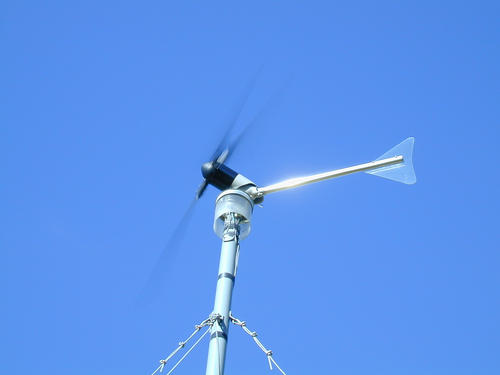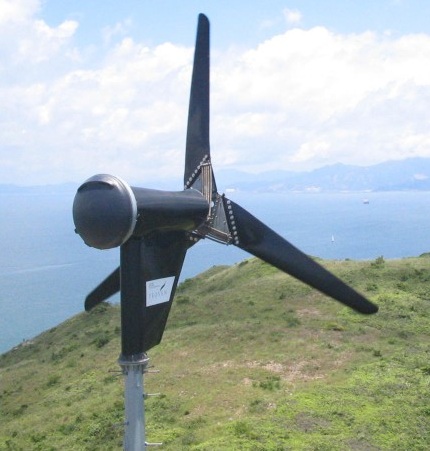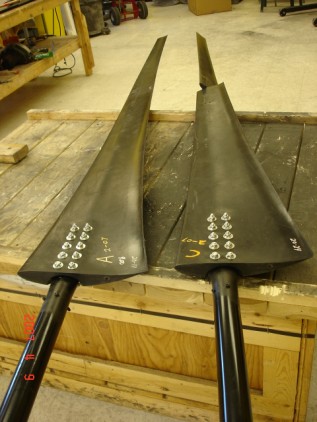Why Blade Pitch or furling is important
As discussed in the section on High vs Low RPM units, there are limits to how fast motors and rotors can operate. A turbine unit is built to safely operate up to a specific speed. Anything from mechanical damage to catastrophic failure can occur when this limit is exceeded.
Therefore, limiting the revolutions per minute is a very critical aspect of machine function. Without this protection, your wind turbine could meet its demise at the first big gust of wind.
Furling
This is where the front part of the nacelle containing the rotor and generator fold about a hinge and the tail continues to track the wind. The desired effect is to turn the blades at an angle to the wind so the rotor will slow down.
Furling happens without motors or special devices. It works because the rotor axis is offset from the furling axis. When the wind exceeds a determined force on the rotor, the rotor rotates around the furling hinge or pin, either vertically or horizontally. As the wind speed slows, the turbine rotor turns back into the wind.

Springs or a shock absorbing piston may be utilized to provide dampening. Furling is a fairly simple method that works but comes with it’s disadvantages. When the rotor is turned out of the wind, power production is reduced. Also the wind hitting the blades at an angle can cause increased noise.
Blade Pitch
A more complex method is to use blades that pitch. As the rotor increases speed, the blade moves to a less efficient aerodynamic angle. The blade basically stalls, thus decreasing lift and limiting the rotor speed. This is accomplished with weights or springs that act on centrifugal force.

This design has it’s drawbacks also – complexity and increased cost. On the positive side, this method is said to be more reliable than furling in protecting the machine. It also allows the machine to continue producing maximum power in high wind where the furling machine will actually drop in production.

Blade tip pitch is another variation that is used on one small turbine made in the U.S. It is the machine built by the Ventera Energy Corporation. The outer tip of the blade responds to centrifugal force instead of the whole blade.